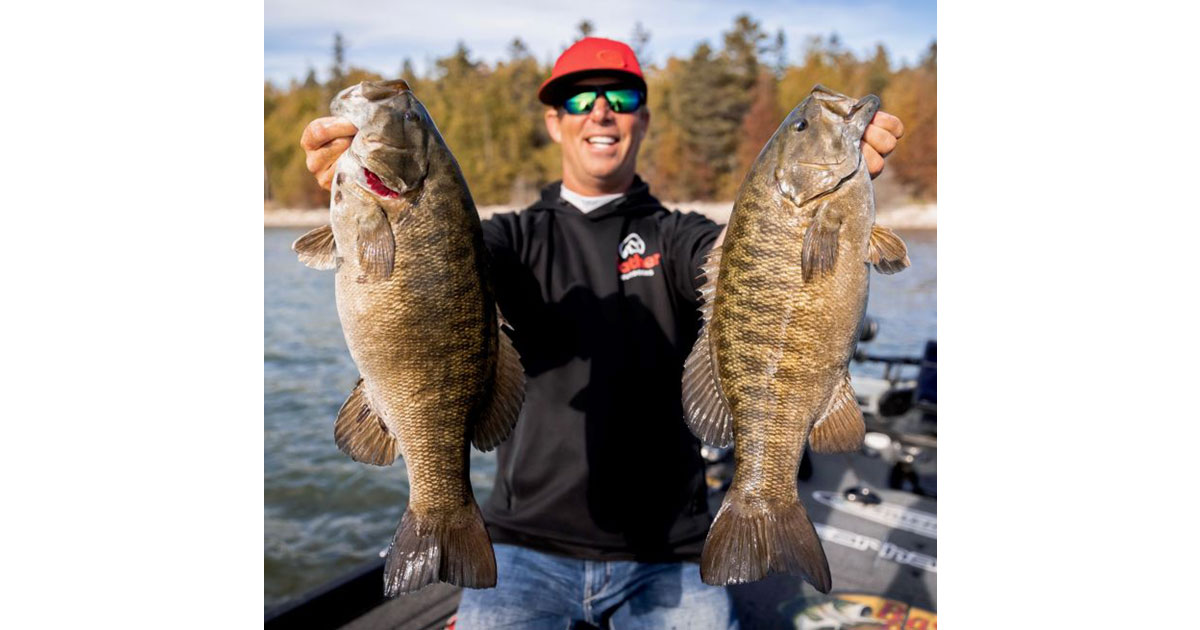By Louie Stout
 These big smallmouth that Neil Vande Biezen caught were likely 10 years or older. It takes Michiana fish longer to reach quality length than most people realize.
These big smallmouth that Neil Vande Biezen caught were likely 10 years or older. It takes Michiana fish longer to reach quality length than most people realize.
Regardless of the kind of fish you pursue, it takes years to produce keeper sizes in Michiana waters.
Indiana and Michigan fish researchers maintain charts listing average fish lengths at various ages based upon historical records. Charts are used to compare growth rates of fish in a given lake with state averages. In Indiana, those comparisons are based on northern Indiana glacial waters and not the impoundments found in the southern half of the states. Although not an exact science, it gives researchers a means to determine the health of fish in a given lake. Faster growth indicates a balanced fishery with a good forage base. Slower growth could indicate overpopulation or inadequate forage base.
Fish are aged by collecting scale samples and examining them under a microscope. Rings seen on the scale are much like rings on a tree. Each ring represents a year of growth.
Bluegill
Both Michigan and Indiana show it takes a bluegill about four years to reach 6 inches and about 6 years to reach 8 inches. Interestingly, females’ growth rate slows after a certain point while males grow bigger as they age.
Bass
And what about bass?
In Michigan and northern Indiana, it takes about five to six years for a largemouth bass to reach legal length of 14 inches.
Based upon Indiana estimates, a 20-inch largemouth is about 10 years old.
Smallmouth tend to have a slightly faster growth rate. Based upon a survey conducted on a northern Indiana river, a four-year old smallmouth averaged a little over 14.5 inches. An 18-inch ages to around 7 years old.
But that can vary. On one river-fed southern Michigan lake surveyed recently, an 18-inch smallmouth was aged at 9 years old.
Either way, it’s an old fish.
Keep in mind that biologists say northern Michigan smallmouth tend to have faster growth rates, but that depends largely upon the type forage in the lake. Therefore, southern Michigan growth rates averages aren’t comparable to those in the northern part of the state.
Walleye
Walleye tend to grow faster, too. In Michigan, the four-year-old fish averages about 15 inches. However, that same fish in Diamond Lake in Cass County measures about 18 inches, which coincidentally, is the Indiana average for a 4-year old walleye.
As you can see, keeper-size fish don’t magically appear overnight and that trophy fish are a lot older than what most anglers realize. Many experts believe those larger fish have genes that can produce good growth and longevity in their offspring.
So think about that the next time you hook a big fish. It might look good on the wall, but it’s also capable of producing more big fish in the future.